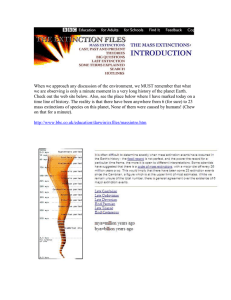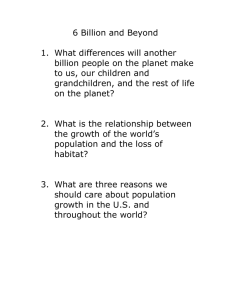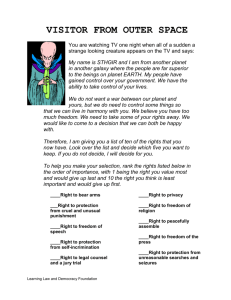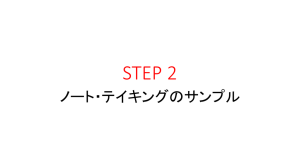12.425 Lecture 9 Thursday October 18, 2007
advertisement
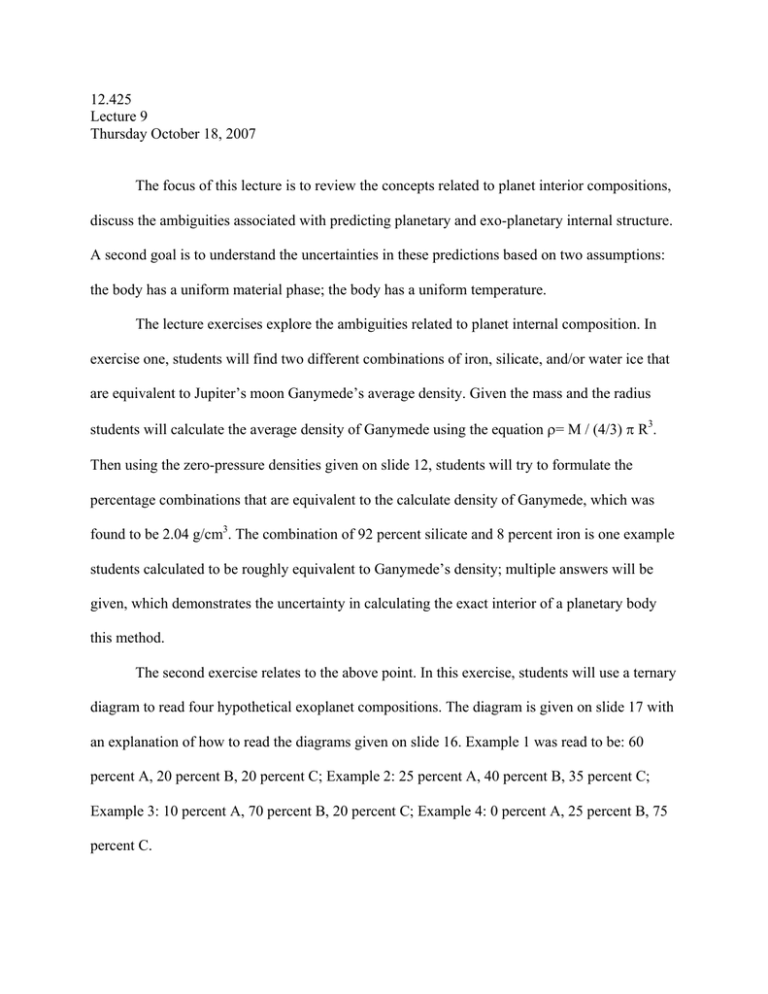
12.425 Lecture 9 Thursday October 18, 2007 The focus of this lecture is to review the concepts related to planet interior compositions, discuss the ambiguities associated with predicting planetary and exo-planetary internal structure. A second goal is to understand the uncertainties in these predictions based on two assumptions: the body has a uniform material phase; the body has a uniform temperature. The lecture exercises explore the ambiguities related to planet internal composition. In exercise one, students will find two different combinations of iron, silicate, and/or water ice that are equivalent to Jupiter’s moon Ganymede’s average density. Given the mass and the radius students will calculate the average density of Ganymede using the equation ρ= M / (4/3) π R3. Then using the zero-pressure densities given on slide 12, students will try to formulate the percentage combinations that are equivalent to the calculate density of Ganymede, which was found to be 2.04 g/cm3. The combination of 92 percent silicate and 8 percent iron is one example students calculated to be roughly equivalent to Ganymede’s density; multiple answers will be given, which demonstrates the uncertainty in calculating the exact interior of a planetary body this method. The second exercise relates to the above point. In this exercise, students will use a ternary diagram to read four hypothetical exoplanet compositions. The diagram is given on slide 17 with an explanation of how to read the diagrams given on slide 16. Example 1 was read to be: 60 percent A, 20 percent B, 20 percent C; Example 2: 25 percent A, 40 percent B, 35 percent C; Example 3: 10 percent A, 70 percent B, 20 percent C; Example 4: 0 percent A, 25 percent B, 75 percent C. The final exercise follows upon the previous exercise’s use of ternary diagrams. Students will look at four ternary diagrams and their given ranges of uncertainty, which is discussed on lecture slides 20 and 21. Students will determine which of the four ternary diagrams represents an 8 Earth-mass planet that has a radius of 1.5 Earth-masses. Students will then try to determine why the curves are similar in each diagram and why the curve moves in the same direction on each diagram. The first step is to determine the density of the hypothetical planet, then consider how that density relates to Earth’s density, and then consider the compositions given in each diagram to choose the best fit for the hypothetical planet. Students will find that the given planet has a density about 2 times that of Earth, allowing them to conclude that the planet must have more iron than Earth. Students will have to discuss the composition of Earth, which is roughly 70 percent silicate and 30 percent iron, to then be able to make a comparison for this planet. After reading the ternary diagrams and their associated compositions, students can then conclude which one best represents the planet. For this exercise, students found that the third diagram (positioned on the bottom, left) best represented the planet’s composition because of its substantial amount of iron. Students should also note that the top, left diagram most closely resembles Earth. Students will also note that the curves are similar based on trying to reach 100 percent density ratios. In each diagram, as silicate iron and water are removed, silicate increases to balance out the loss since silicate has a density in between iron and water. Students may also notice that the diagram lines curve, a result that represents compression that relates to pressure and affects density.
